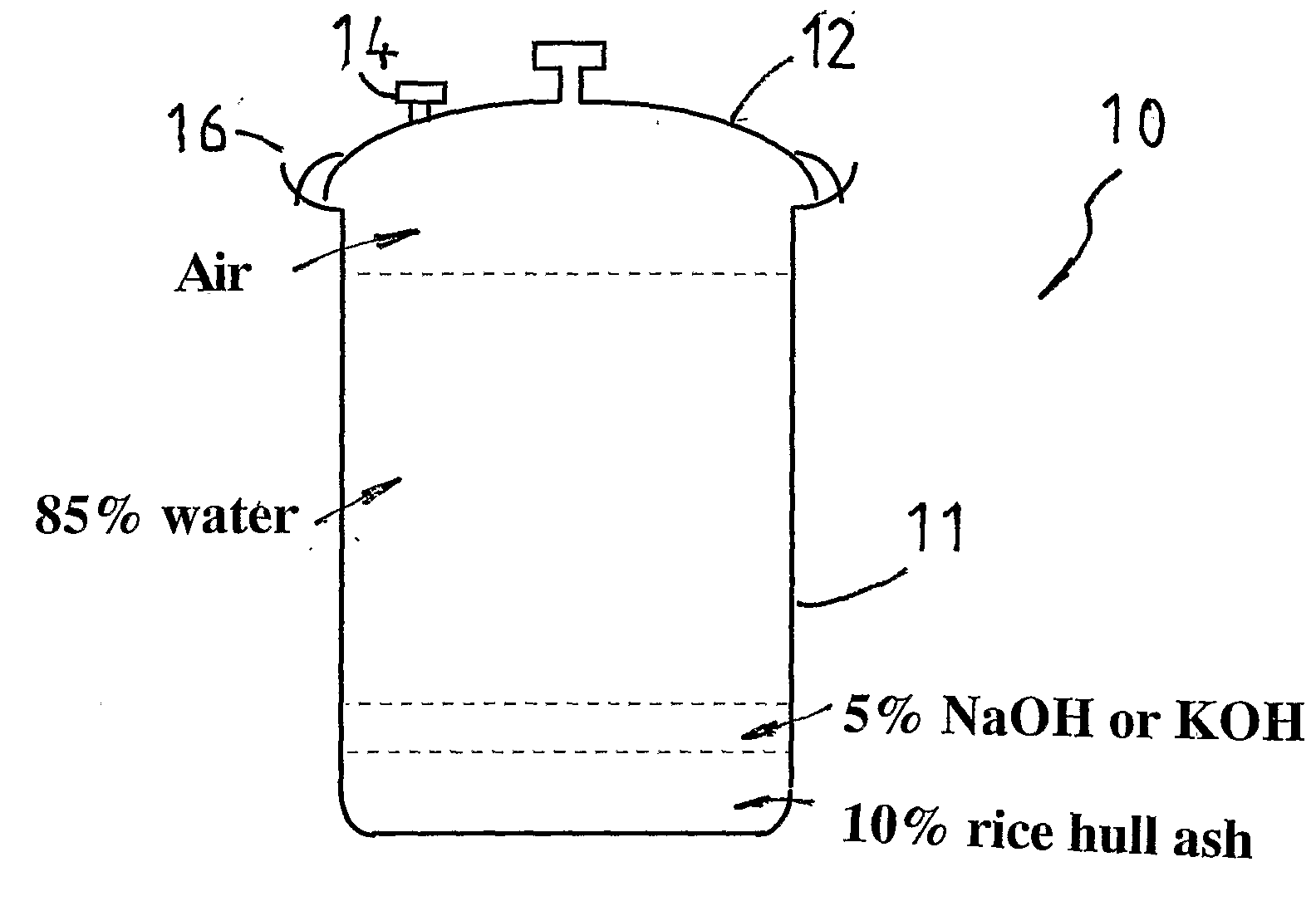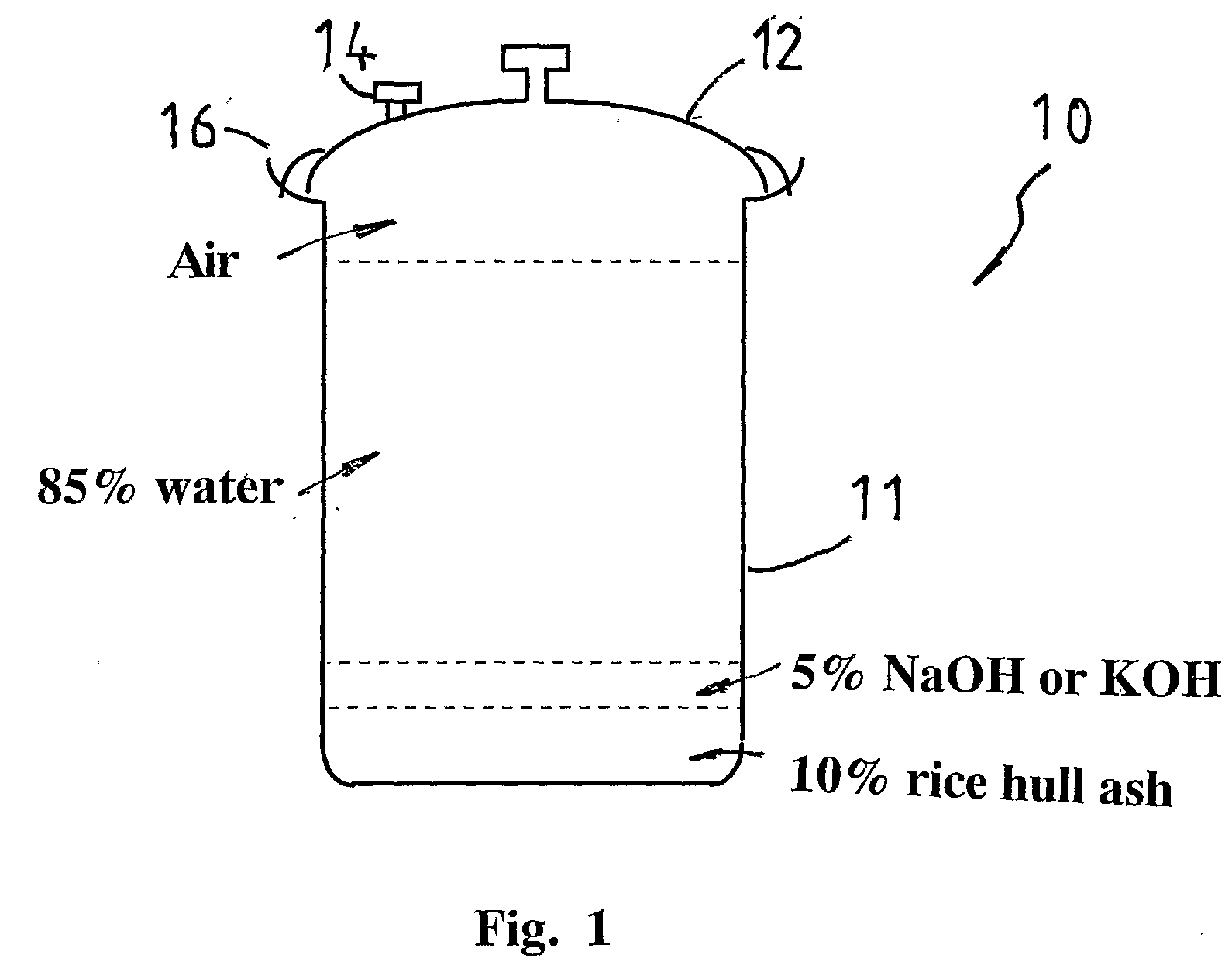Soluble Biogenic Silica and Application Using Same
a biogenic silica and soluble technology, applied in the field of soluble biogenic silica, can solve the problems of contaminating soil, sediment, water and/or air in the vicinity, affecting the health of the environment, and not being able to solve the long-term solution, and being costly and ineffective in encapsulation
- Summary
- Abstract
- Description
- Claims
- Application Information
AI Technical Summary
Benefits of technology
Problems solved by technology
Method used
Image
Examples
Embodiment Construction
Tables of Results
[0115]
TABLE A1Analytical results for batch experiments with radioactive speciespH ofSpecieaqueousretentionphaseDry massConcin aqueousSpecieafterof solidSpecie(g · L−1)phasedesorptionmixingphase (g)a) SOLSIL 1:10 dilution pH 10.0137Cs5550.94 ± 0.060.00 ± 0.0500.04210Pb15860.89 ± 0.090.03 ± 0.0150.00226Ra1001.05 ± 0.170.03 ± 0.0240.0510000.98 ± 0.090.06 ± 0.0100.06228Ra990.42 ± 0.3141.109890.96 ± 0.0740.25228Th990.05 ± 0.0741.109890.19 ± 0.0240.25232Th990.13 ± 0.020.05 ± 0.0040.639890.21 ± 0.010.40 ± 0.0240.25238U1000.86 ± 0.160.02 ± 0.0000.0410000.81 ± 0.160.01 ± 0.0050.07241Am4560.80 ± 0.050.00 ± 0.0040.0760Co6100.90 ± 0.100.05 ± 0.0220.0690Sr / 90Y6100.99 ± 0.070.02 ± 0.0040.04b) SOLSIL 1:10 dilution pH 12.8137Cs5550.90 ± 0.060.02 ± 0.1400.04210Pb15860.07 ± 0.020.10 ± 0.01130.00226Ra1000.36 ± 0.090.08 ± 0.02110.1210000.99 ± 0.090.02 ± 0.0100.04228Ra990.30 ± 0.29130.079890.73 ± 0.07130.05228Th990.27 ± 0.07130.079890.72 ± 0.02130.05232Th990.13 ± 0.020.02 ± 0.00130.0898...
PUM
| Property | Measurement | Unit |
|---|---|---|
| temperature | aaaaa | aaaaa |
| temperature | aaaaa | aaaaa |
| temperature | aaaaa | aaaaa |
Abstract
Description
Claims
Application Information
 Login to View More
Login to View More - R&D
- Intellectual Property
- Life Sciences
- Materials
- Tech Scout
- Unparalleled Data Quality
- Higher Quality Content
- 60% Fewer Hallucinations
Browse by: Latest US Patents, China's latest patents, Technical Efficacy Thesaurus, Application Domain, Technology Topic, Popular Technical Reports.
© 2025 PatSnap. All rights reserved.Legal|Privacy policy|Modern Slavery Act Transparency Statement|Sitemap|About US| Contact US: help@patsnap.com



